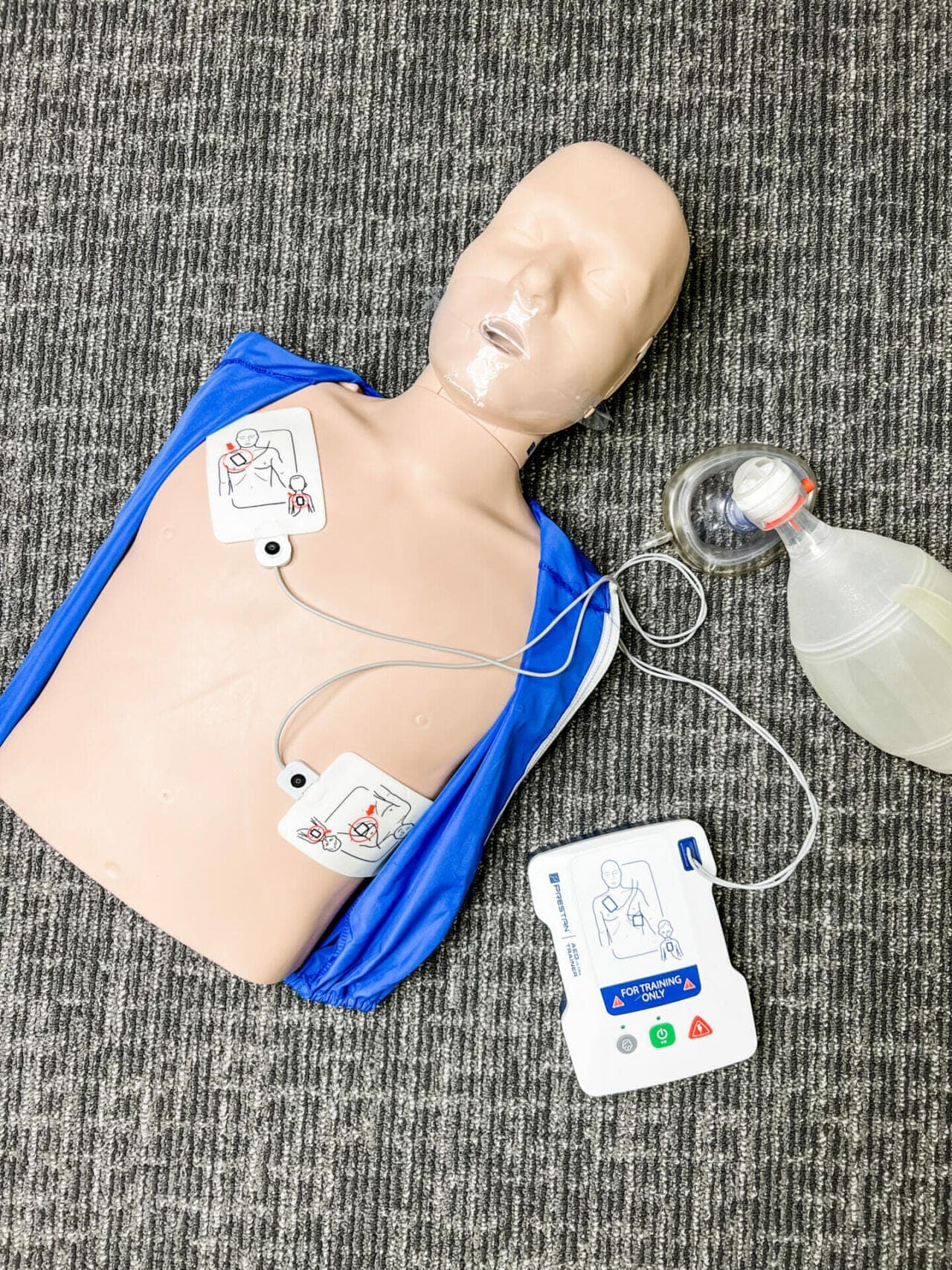AED Certification

Every AED owner should get AED certification. AED’s are becoming standard safety equipment in private and public buildings across the U.S. If you have a defibrillator or work at a place with one, it’s important to be familiar with how to use them. AED’s are very simple and easy to use, but being trained in how to use one can save precious seconds for victims of cardiac arrest.
What is Included in AED Certification?
AED Certification is typically a 2 hour class and includes CPR (cardiopulmonary resuscitation) training. The course will cover how to recognize sudden cardiac arrest, perform hands only CPR, and how to perform CPR with compressions and breaths. AED training will also cover when to use an AED, how to follow the AED directions, and other considerations. AED training will teach the differences on using an AED for adults, children, and infants.
There is no age requirement for CPR & AED training. However, to receive a certification, students must be able to pass skill tests with their instructor. In most cases children ages 8 and up that are mature enough to attend a two hour course benefit from the training. However, the physical skills in CPR training can be difficult for anyone under the age of 12 to perform.
How Long Does AED Certification Last?
The skills taught in AED training should be fairly simple to remember. However, both the AHA and Red Cross’s CPR and AED certifications expire after two years. If your workplace or licensure requires your certification be maintained, you will need to renew every two years. While this may be frustrating, studies have shown that “even healthcare professionals, who are required to renew CPR skill certification every 2 years, perform optimal chest compressions just 28% of the time without CPR quality feedback, and only improve to 50% with feedback.” (Citation: AHA Journal)
Can I take just AED Certification?
Currently, the AHA and Red Cross only provide AED certification to people who also take CPR certification. These skill sets go hand in hand with each skill being just as important. While an AED can provide a shock that may revive the heart, if it does not work, CPR skills are invaluable to keep blood flowing in the victims body and their vital organs working.
Can I get AED Certified Online?
The American Heart Association (AHA) does offer online CPR/AED training. However, this training is not complete until the student attends an in person skills session with the instructor. The AHA calls these classes ‘Heartcode’ and they give the same certification card that students get when they take the full class in person. After completing the online course students will get a partial completion certificate but it is not a certification card. To be fully certified in CPR and AED skills you must also attend an in person session with an instructor.
If you are a Healthcare Provider, looking to take Basic Life Support CPR & AED training online, you will want to purchase the AHA Heartcode BLS course. For people not in the medical field looking to take CPR/AED Certification, you would purchase the AHA Heartcode Heartsaver CPR/AED course. Once you have completed the AHA Heartcode course you can meet with a local AHA instructor to get fully checked off to receive certification.
Be aware, there are some companies that advertise online only AED training. Please note this is not generally accepted or recognized to meet AED certification requirements.
If I Have an AED, Do I Have to Have AED Certification?
AED’s are regulated by local state authorities. To find out what your state requires, read State Laws on Cardiac Arrest and Defibrillators. Generally states require at minimum:
- Physician oversight of an AED
- the AED be registered
- Any potential AED users be certified in CPR and First Aid.
- The AED be regularly maintained
- EMS be activated upon use of an AED.
If you do not have AED Program Management, you should watch this video to learn more about the helpful service that helps maintain your compliance:
https://www.youtube.com/watch?v=h6FH9nPgU-g
Where to Find AED Certification?
AED and CPR certification is widely available and generally easy to find throughout the U.S. You can search for accredited American Heart Association (AHA) and American Red Cross (ARC) instructors on Class Eagle. Class Eagle is a free health and safety instructor directory that connects students and instructors to help increase the amount of people with lifesaving training.


